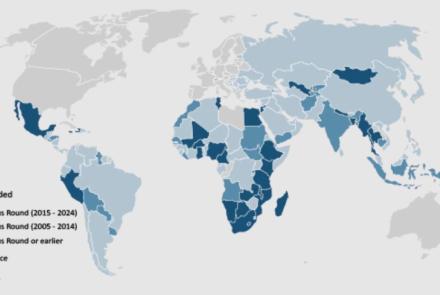Annotated Bibliography: Gender Norms and Practices
Basu, S., Zuo, X., Lou, C., Acharya, R., & Lundgren, R. (2017). Learning to be gendered: gender socialization in early adolescence among urban poor in Delhi, India, and Shanghai, China. Journal of Adolescent Health, 61(4), S24-S29.
Purpose: The purpose of the study is to understand the gender socialization process in early adolescence.
Methods:The study was located in two disadvantaged urban communities in Delhi, India and Shanghai, China and was part of the multicountry Global Early Adolescent Study. Qualitative methodologies were used with boys and girls aged 11-13 years, including 16 group-based timeline exercises and 65 narrative interviews. In addition, 58 parents of participating adolescents were interviewed. Interviews were recorded, transcribed, translated, and uploaded into Atlas.ti for coding and thematic analysis.
Results: Boys and girls growing up in the same community were directed onto different pathways during their transition from early to late adolescence. Adolescents and parents in both sites identified mothers as the primary actor, socializing adolescents into how to dress and behave and what gender roles to play, although fathers were also mentioned as influential. Opposite-sex interactions were restricted, and violations enforced by physical violence. In Delhi, gender roles and mobility were more strictly enforced for girls than boys. Restrictions on opposite-sex interactions were rigid for both boys and girls in Delhi and Shanghai. Sanctions, including beating, for violating norms about boy-girl relationships were more punitive than those related to dress and demeanor, especially in Delhi. Education and career expectations were notably more equitable in Shanghai.
Conclusions: Parents teach their children to adhere to inequitable gender norms in both Delhi and Shanghai. However, education and career expectations for boys and girls in the two sites differed. Although gender norms varied by site according to the particular cultural and historical context, similar patterns of gender inequity reflect the underlying patriarchal system in both settings. The tendency of parents to pass on the norms they grew up with is evident, yet these results illustrate the social construction of gender through children’s interaction with the social ecology, including evolving political and economic systems. Efforts to bend gender norms toward greater equality can build on these results.
Brinton, M. C. (2016). Intentions into actions: Norms as mechanisms linking macro-and micro- levels. American Behavioral Scientist, 60(10), 1146-1167.
This article addresses the emergence of “lowest-low” fertility in some countries, primarily in Southern Europe and East Asia, and poses the question of why we find such large differences in birth rates across postindustrial societies. A set of macro– micro mechanisms are identified, which are examined empirically using comparative data for seven countries from the Gender and Generations Survey. Social norms, and in particular social norms related to gender roles, are at the center of the analysis as a mechanism that conditions the translation of intentions into behavior. Societies that discourage gender equity in the private sphere of the household tend to be characterized by a strong breadwinner ideology.
In these societies, the valorization of women’s role as household manager and mother is mirrored by the valorization of men’s role as breadwinner for the household. In these societies, there is a strong norm that a young man should be able to support a family prior to getting married and becoming a parent, that is, that males should prove themselves to be adequate breadwinners. When combined with changing structural conditions, such as high unemployment rates, prolonged periods of education, and increasingly insecure terms of employment in flexible labor markets, this norm will lead to declining birth rates. Hence, norms work as a mechanism that filters the effect of structural conditions so that structural constraints on fertility, such as limited labor market opportunities for young men, will affect fertility outcomes via the mechanism of gender-role norms.
Center on Gender Equity and Health. (2020). A Roadmap for Measuring Agency and Social Norms in Women’s Economic Empowerment: Center on Gender Equity and Health.
Women’s and girls’ empowerment is central to improving global health and development, as recognized by the United Nations Sustainable Development Goals (SDGs). However, data availability of indicators on empowerment at scale remains inadequate. There is a growing movement to improve gender data availability at the country level, and this requires greater global guidance on what constructs should be prioritized for measurement and data, and what measures already exist that can be taken to scale. This report contributes to this guidance by offering a Roadmap to Measurement of Women’s Economic Empowerment. This roadmap offers a) theory and conceptualization of empowerment for measurement, with a focus on agency and norms, b) application of this conceptual framework for analysis of measures of Women’s Economic Empowerment, again with a focus on agency and norms, to highlight best evidence measures for use at scale and to identify gaps in measurement. We then c) offer guidance on how to build from this evidence base and increase availability and use of measures that can be implemented at scale to capture and monitor women’s economic empowerment for the SDGs.
Desai, S., & Temsah, G. (2014). Muslim and Hindu Women’s public and private behaviors: gender, family, and communalized politics in India. Demography, 51(6), 2307-2332.
Prior research on fundamentalist religious movements has focused attention on the complicated relationship among gender, family, and religion. Using data from a nationally representative survey of 30,000 Hindu and Muslim women, this study compares the daily public and private behaviors of women in India to examine how gender and family norms are shaped in the context of communalized identity politics. Building on the theoretical framework of “doing gender,” we argue that because communal identities are expressed through externally visible behaviors, greater religious differences are expected in external markers of gendered behaviors and family norms. Results indicate that Muslim women are more likely to engage in veiling and less likely to venture outside the home for recreation and employment. However, religious differences are absent when attention is directed at private behaviors, such as household decision-making power, gender segregation within households, and discrimination against daughters. Results underscore the multidimensionality of gender.
Gates, L. C. (2002). The strategic uses of gender in household negotiations: women workers on Mexico’s northern border. Bulletin of Latin American Research, 21(4), 507-526.
The study illustrates the potential of the ‘doing gender' perspective to explain why employment does not always improve women's household-power. Eighteen in-depth interviews with women maquiladora workers in Mexico suggest that, depending on the gendered meanings of household negotiations, employment may help women gain new rights and extend the limits of respect accorded them by male companions and parents. Nevertheless, women were more successful when they used negotiating strategies that conformed to their gender identity, such as making offers, than when they used negotiating strategies that challenged traditional gender norms, such as withdrawing services or making threats.
Heise, L., Greene, M. E., Opper, N., Stavropoulou, M., Harper, C., Nascimento, M., . . . Hawkes, S. (2019). Gender inequality and restrictive gender norms: framing the challenges to health. The Lancet.
Gender is not accurately captured by the traditional male and female dichotomy of sex. Instead, it is a complex social system that structures the life experience of all human beings. This paper, the first in a Series of five papers, investigates the relationships between gender inequality, restrictive gender norms, and health and wellbeing. Building upon past work, we offer a consolidated conceptual framework that shows how individuals born biologically male or female develop into gendered beings, and how sexism and patriarchy intersect with other forms of discrimination, such as racism, classism, and homophobia, to structure pathways to poor health. We discuss the ample evidence showing the far-reaching consequences of these pathways, including how gender inequality and restrictive gender norms impact health through differential exposures, health-related behaviours and access to care, as well as how gender-biased health research and health-care systems reinforce and reproduce gender inequalities, with serious implications for health. The cumulative consequences of structured disadvantage, mediated through discriminatory laws, policies, and institutions, as well as diet, stress, substance use, and environmental toxins, have triggered important discussions about the role of social injustice in the creation and maintenance of health inequities, especially along racial and socioeconomic lines. This Series paper raises the parallel question of whether discrimination based on gender likewise becomes embodied, with negative consequences for health. For decades, advocates have worked to eliminate gender discrimination in global health, with only modest success. A new plan and new political commitment are needed if these global health aspirations and the wider Sustainable Development Goals of the UN are to be achieved.
Mason, K. O., & Smith, H. L. (2003). Women’s empowerment and social context: Results from five Asian countries. Gender and Development Group, World Bank, Washington, DC.
This paper analyzes multiple measures of married women’s empowerment in the domestic sphere in 56 communities spanning five Asian countries (India, Malaysia, Pakistan, the Philippines, and Thailand). At issue is whether community or individual characteristics are better predictors of women’s empowerment, and whether different dimensions of empowerment are similarly related to community or individual traits. The analysis shows that, consistent with the theoretical approach employed here, which treats gender relations as heavily influenced by community norms and values, community is a far stronger predictor of women’s empowerment than are individual traits. The relationship of both community and individual traits to different measures of empowerment vary, suggesting that “empowerment” is inherently a multi-dimensional phenomenon, with women relatively empowered in some spheres but not in others. The primary policy implication is the importance of changing community norms and values about gender relations for empowering women. The results also suggest that policies to raise women’s age at marriage, enhance their educations and open greater employment opportunities will also help to empower them, at least in some respects.
Mitra, A., & Singh, P. (2007). Human capital attainment and gender empowerment: The Kerala paradox. Social Science Quarterly, 88(5), 1227-1242.
Objectives: The State of Kerala in southwestern India shows the highest gender development index in the country. Despite having the highest literacy rate and educational achievements of women, the suicide rate among females is very high, and domestic violence committed against women is increasing every year in Kerala. This article attempts to analyze the demographic, social, and cultural changes that are occurring in order to understand this apparent paradox of high human capital attainment and high violence and suicides experienced by women in Kerala.
Methods: The study uses data from the Census of India (1991, 2001), National Crime Records Bureau (1998–2000), and Reproductive and Child Health (District Level Household Survey— 2001) to analyze trends in crime, violence, and suicide rates, and demographic profiles of the different districts in Kerala.
Results: High educational attainment has fostered new aspirations and attitudes among women in Kerala. Yet, societal and cultural norms still dictate that women should be subservient to men both at home and in the labor market. This imbalance often contributes to family violence and suicides in Kerala. Thus, beneath the veil of development lie some disturbing social, cultural, and economic issues that may be contributing to high rates of suicide and family violence in Kerala.
Conclusions: This study demonstrates that high educational attainment alone will not promote gender empowerment unless the social and cultural fabric of a country or state ensures equality of women in all areas of life.




